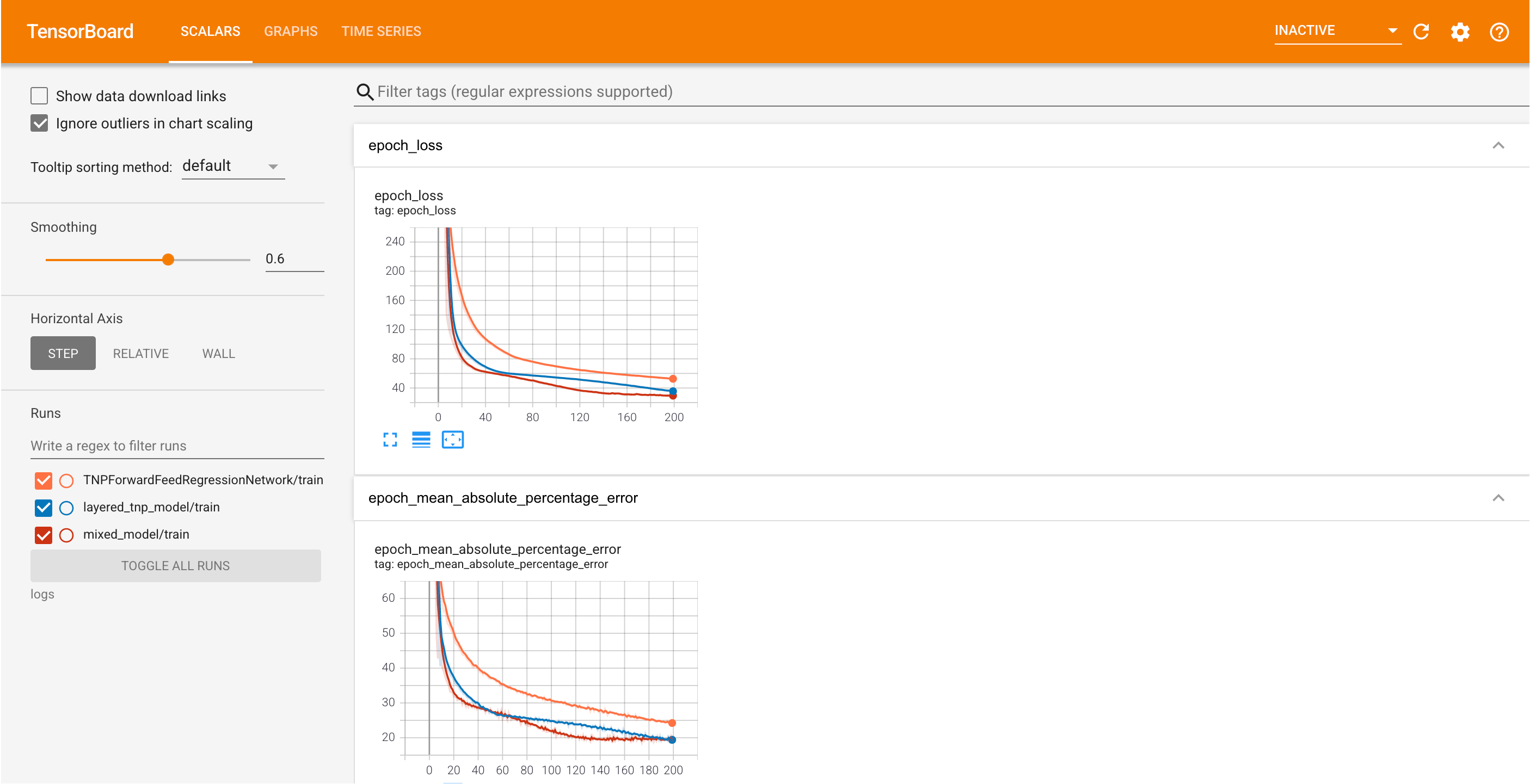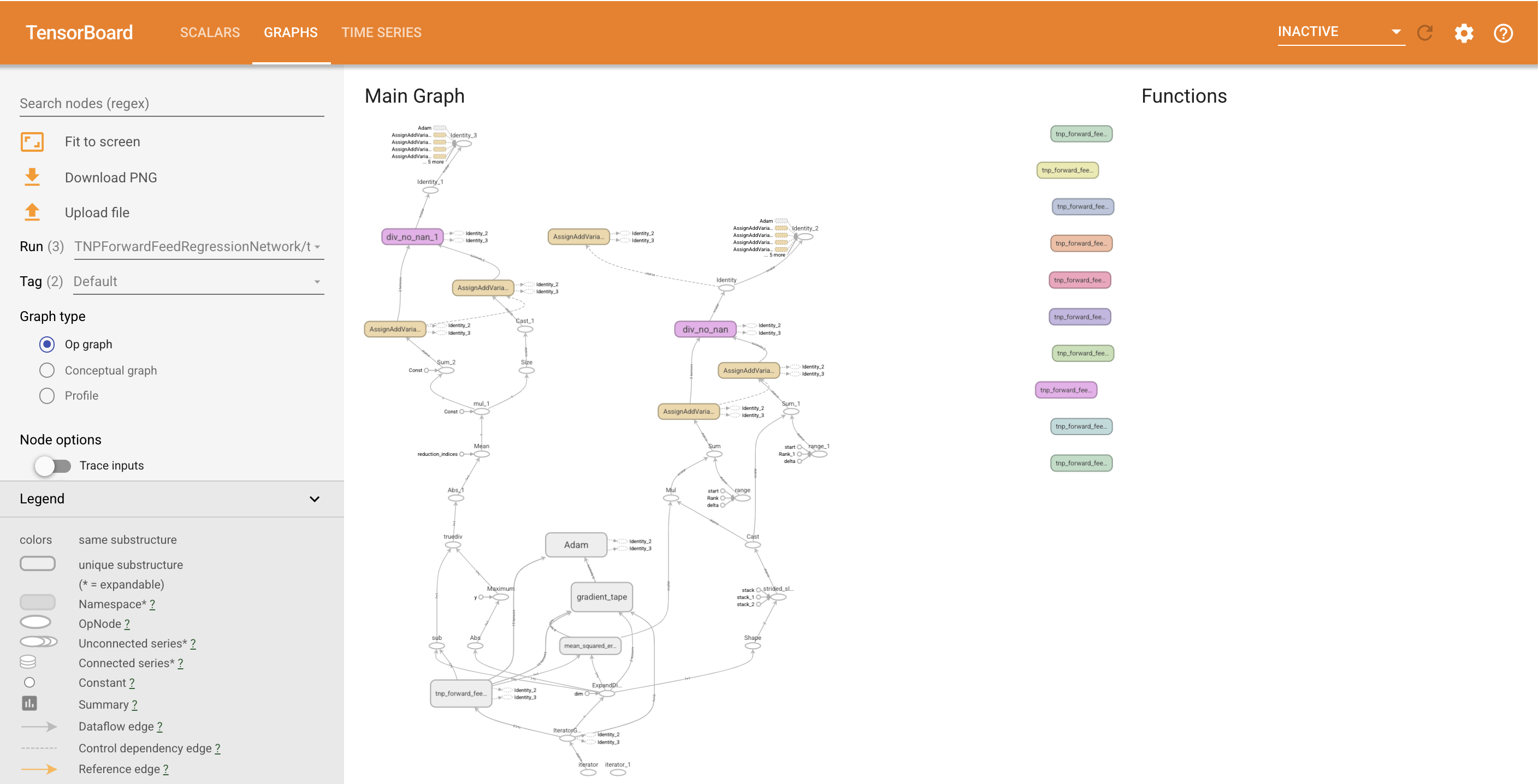Writing Keras Models With TensorFlow NumPy
- Original Link : https://keras.io/examples/keras_recipes/tensorflow_numpy_models/
- Last Checked at : 2024-11-24
Author: lukewood
Date created: 2021/08/28
Last modified: 2021/08/28
Description: Overview of how to use the TensorFlow NumPy API to write Keras models.
Introduction
NumPy is a hugely successful Python linear algebra library.
TensorFlow recently launched tf_numpy, a TensorFlow implementation of a large subset of the NumPy API. Thanks to tf_numpy, you can write Keras layers or models in the NumPy style!
The TensorFlow NumPy API has full integration with the TensorFlow ecosystem. Features such as automatic differentiation, TensorBoard, Keras model callbacks, TPU distribution and model exporting are all supported.
Let’s run through a few examples.
Setup
import os
os.environ["KERAS_BACKEND"] = "tensorflow"
import tensorflow as tf
import tensorflow.experimental.numpy as tnp
import keras
from keras import layersTo test our models we will use the Boston housing prices regression dataset.
(x_train, y_train), (x_test, y_test) = keras.datasets.boston_housing.load_data(
path="boston_housing.npz", test_split=0.2, seed=113
)
input_dim = x_train.shape[1]
def evaluate_model(model: keras.Model):
loss, percent_error = model.evaluate(x_test, y_test, verbose=0)
print("Mean absolute percent error before training: ", percent_error)
model.fit(x_train, y_train, epochs=200, verbose=0)
loss, percent_error = model.evaluate(x_test, y_test, verbose=0)
print("Mean absolute percent error after training:", percent_error)Result
Downloading data from https://storage.googleapis.com/tensorflow/tf-keras-datasets/california_housing.npz
743530/743530 ━━━━━━━━━━━━━━━━━━━━ 0s 0us/stepSubclassing keras.Model with TNP
The most flexible way to make use of the Keras API is to subclass the keras.Model class. Subclassing the Model class gives you the ability to fully customize what occurs in the training loop. This makes subclassing Model a popular option for researchers.
In this example, we will implement a Model subclass that performs regression over the boston housing dataset using the TNP API. Note that differentiation and gradient descent is handled automatically when using the TNP API alongside keras.
First let’s define a simple TNPForwardFeedRegressionNetwork class.
class TNPForwardFeedRegressionNetwork(keras.Model):
def __init__(self, blocks=None, **kwargs):
super().__init__(**kwargs)
if not isinstance(blocks, list):
raise ValueError(f"blocks must be a list, got blocks={blocks}")
self.blocks = blocks
self.block_weights = None
self.biases = None
def build(self, input_shape):
current_shape = input_shape[1]
self.block_weights = []
self.biases = []
for i, block in enumerate(self.blocks):
self.block_weights.append(
self.add_weight(
shape=(current_shape, block),
trainable=True,
name=f"block-{i}",
initializer="glorot_normal",
)
)
self.biases.append(
self.add_weight(
shape=(block,),
trainable=True,
name=f"bias-{i}",
initializer="zeros",
)
)
current_shape = block
self.linear_layer = self.add_weight(
shape=(current_shape, 1),
name="linear_projector",
trainable=True,
initializer="glorot_normal",
)
def call(self, inputs):
activations = inputs
for w, b in zip(self.block_weights, self.biases):
activations = tnp.matmul(activations, w) + b
# ReLu activation function
activations = tnp.maximum(activations, 0.0)
return tnp.matmul(activations, self.linear_layer)Just like with any other Keras model we can utilize any supported optimizer, loss, metrics or callbacks that we want.
Let’s see how the model performs!
model = TNPForwardFeedRegressionNetwork(blocks=[3, 3])
model.compile(
optimizer="adam",
loss="mean_squared_error",
metrics=[keras.metrics.MeanAbsolutePercentageError()],
)
evaluate_model(model)Result
WARNING: All log messages before absl::InitializeLog() is called are written to STDERR
I0000 00:00:1699909864.025985 48611 device_compiler.h:187] Compiled cluster using XLA! This line is logged at most once for the lifetime of the process.
Mean absolute percent error before training: 99.96772766113281
Mean absolute percent error after training: 40.94866180419922Great! Our model seems to be effectively learning to solve the problem at hand.
We can also write our own custom loss function using TNP.
def tnp_mse(y_true, y_pred):
return tnp.mean(tnp.square(y_true - y_pred), axis=0)
keras.backend.clear_session()
model = TNPForwardFeedRegressionNetwork(blocks=[3, 3])
model.compile(
optimizer="adam",
loss=tnp_mse,
metrics=[keras.metrics.MeanAbsolutePercentageError()],
)
evaluate_model(model)Result
Mean absolute percent error before training: 99.99896240234375
Mean absolute percent error after training: 52.533199310302734Implementing a Keras Layer Based Model with TNP
If desired, TNP can also be used in layer oriented Keras code structure. Let’s implement the same model, but using a layered approach!
def tnp_relu(x):
return tnp.maximum(x, 0)
class TNPDense(keras.layers.Layer):
def __init__(self, units, activation=None):
super().__init__()
self.units = units
self.activation = activation
def build(self, input_shape):
self.w = self.add_weight(
name="weights",
shape=(input_shape[1], self.units),
initializer="random_normal",
trainable=True,
)
self.bias = self.add_weight(
name="bias",
shape=(self.units,),
initializer="zeros",
trainable=True,
)
def call(self, inputs):
outputs = tnp.matmul(inputs, self.w) + self.bias
if self.activation:
return self.activation(outputs)
return outputs
def create_layered_tnp_model():
return keras.Sequential(
[
TNPDense(3, activation=tnp_relu),
TNPDense(3, activation=tnp_relu),
TNPDense(1),
]
)
model = create_layered_tnp_model()
model.compile(
optimizer="adam",
loss="mean_squared_error",
metrics=[keras.metrics.MeanAbsolutePercentageError()],
)
model.build((None, input_dim))
model.summary()
evaluate_model(model)Result
Model: "sequential"
┏━━━━━━━━━━━━━━━━━━━━━━━━━━━━━━━━━┳━━━━━━━━━━━━━━━━━━━━━━━━━━━┳━━━━━━━━━━━━┓
┃ Layer (type) ┃ Output Shape ┃ Param # ┃
┡━━━━━━━━━━━━━━━━━━━━━━━━━━━━━━━━━╇━━━━━━━━━━━━━━━━━━━━━━━━━━━╇━━━━━━━━━━━━┩
│ tnp_dense (TNPDense) │ (None, 3) │ 27 │
├─────────────────────────────────┼───────────────────────────┼────────────┤
│ tnp_dense_1 (TNPDense) │ (None, 3) │ 12 │
├─────────────────────────────────┼───────────────────────────┼────────────┤
│ tnp_dense_2 (TNPDense) │ (None, 1) │ 4 │
└─────────────────────────────────┴───────────────────────────┴────────────┘
Total params: 43 (172.00 B)
Trainable params: 43 (172.00 B)
Non-trainable params: 0 (0.00 B)Mean absolute percent error before training: 100.00006866455078
Mean absolute percent error after training: 43.57806396484375You can also seamlessly switch between TNP layers and native Keras layers!
def create_mixed_model():
return keras.Sequential(
[
TNPDense(3, activation=tnp_relu),
# The model will have no issue using a normal Dense layer
layers.Dense(3, activation="relu"),
# ... or switching back to tnp layers!
TNPDense(1),
]
)
model = create_mixed_model()
model.compile(
optimizer="adam",
loss="mean_squared_error",
metrics=[keras.metrics.MeanAbsolutePercentageError()],
)
model.build((None, input_dim))
model.summary()
evaluate_model(model)Result
Model: "sequential_1"
┏━━━━━━━━━━━━━━━━━━━━━━━━━━━━━━━━━┳━━━━━━━━━━━━━━━━━━━━━━━━━━━┳━━━━━━━━━━━━┓
┃ Layer (type) ┃ Output Shape ┃ Param # ┃
┡━━━━━━━━━━━━━━━━━━━━━━━━━━━━━━━━━╇━━━━━━━━━━━━━━━━━━━━━━━━━━━╇━━━━━━━━━━━━┩
│ tnp_dense_3 (TNPDense) │ (None, 3) │ 27 │
├─────────────────────────────────┼───────────────────────────┼────────────┤
│ dense (Dense) │ (None, 3) │ 12 │
├─────────────────────────────────┼───────────────────────────┼────────────┤
│ tnp_dense_4 (TNPDense) │ (None, 1) │ 4 │
└─────────────────────────────────┴───────────────────────────┴────────────┘
Total params: 43 (172.00 B)
Trainable params: 43 (172.00 B)
Non-trainable params: 0 (0.00 B)Mean absolute percent error before training: 100.0
Mean absolute percent error after training: 55.646610260009766The Keras API offers a wide variety of layers. The ability to use them alongside NumPy code can be a huge time saver in projects.
Distribution Strategy
TensorFlow NumPy and Keras integrate with TensorFlow Distribution Strategies. This makes it simple to perform distributed training across multiple GPUs, or even an entire TPU Pod.
gpus = tf.config.list_logical_devices("GPU")
if gpus:
strategy = tf.distribute.MirroredStrategy(gpus)
else:
# We can fallback to a no-op CPU strategy.
strategy = tf.distribute.get_strategy()
print("Running with strategy:", str(strategy.__class__.__name__))
with strategy.scope():
model = create_layered_tnp_model()
model.compile(
optimizer="adam",
loss="mean_squared_error",
metrics=[keras.metrics.MeanAbsolutePercentageError()],
)
model.build((None, input_dim))
model.summary()
evaluate_model(model)Result
INFO:tensorflow:Using MirroredStrategy with devices ('/job:localhost/replica:0/task:0/device:GPU:0',)
Running with strategy: MirroredStrategyModel: "sequential_2"
┏━━━━━━━━━━━━━━━━━━━━━━━━━━━━━━━━━┳━━━━━━━━━━━━━━━━━━━━━━━━━━━┳━━━━━━━━━━━━┓
┃ Layer (type) ┃ Output Shape ┃ Param # ┃
┡━━━━━━━━━━━━━━━━━━━━━━━━━━━━━━━━━╇━━━━━━━━━━━━━━━━━━━━━━━━━━━╇━━━━━━━━━━━━┩
│ tnp_dense_5 (TNPDense) │ (None, 3) │ 27 │
├─────────────────────────────────┼───────────────────────────┼────────────┤
│ tnp_dense_6 (TNPDense) │ (None, 3) │ 12 │
├─────────────────────────────────┼───────────────────────────┼────────────┤
│ tnp_dense_7 (TNPDense) │ (None, 1) │ 4 │
└─────────────────────────────────┴───────────────────────────┴────────────┘
Total params: 43 (172.00 B)
Trainable params: 43 (172.00 B)
Non-trainable params: 0 (0.00 B)
```plain
Mean absolute percent error before training: 100.0
Mean absolute percent error after training: 44.573463439941406TensorBoard Integration
One of the many benefits of using the Keras API is the ability to monitor training through TensorBoard. Using the TensorFlow NumPy API alongside Keras allows you to easily leverage TensorBoard.
keras.backend.clear_session()To load the TensorBoard from a Jupyter notebook, you can run the following magic:
%load_ext tensorboardmodels = [
(
TNPForwardFeedRegressionNetwork(blocks=[3, 3]),
"TNPForwardFeedRegressionNetwork",
),
(create_layered_tnp_model(), "layered_tnp_model"),
(create_mixed_model(), "mixed_model"),
]
for model, model_name in models:
model.compile(
optimizer="adam",
loss="mean_squared_error",
metrics=[keras.metrics.MeanAbsolutePercentageError()],
)
model.fit(
x_train,
y_train,
epochs=200,
verbose=0,
callbacks=[keras.callbacks.TensorBoard(log_dir=f"logs/{model_name}")],
)Result
/opt/conda/envs/keras-tensorflow/lib/python3.10/site-packages/keras/src/callbacks/tensorboard.py:676: UserWarning: Model failed to serialize as JSON. Ignoring... Invalid format specifier
warnings.warn(f"Model failed to serialize as JSON. Ignoring... {exc}")To load the TensorBoard from a Jupyter notebook you can use the %tensorboard magic:
%tensorboard --logdir logsThe TensorBoard monitor metrics and examine the training curve.

The TensorBoard also allows you to explore the computation graph used in your models.

The ability to introspect into your models can be valuable during debugging.
Conclusion
Porting existing NumPy code to Keras models using the tensorflow_numpy API is easy! By integrating with Keras you gain the ability to use existing Keras callbacks, metrics and optimizers, easily distribute your training and use Tensorboard.
Migrating a more complex model, such as a ResNet, to the TensorFlow NumPy API would be a great follow up learning exercise.
Several open source NumPy ResNet implementations are available online.